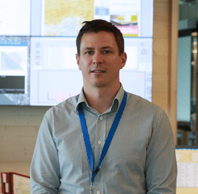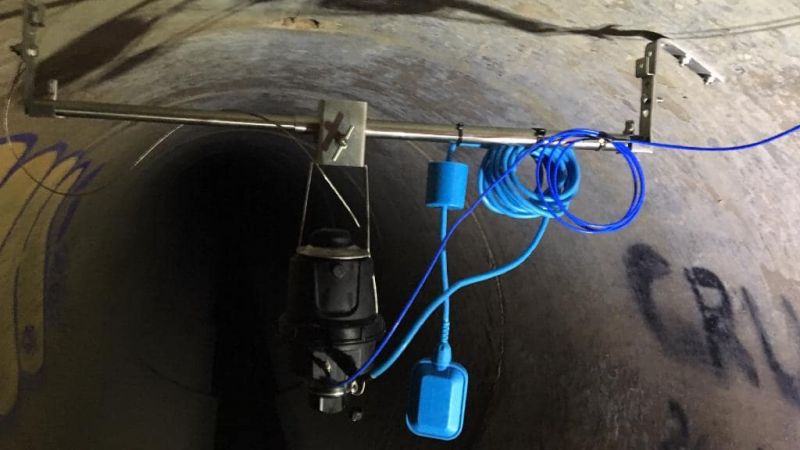In Conversation with Andrew Forster-Knight, Operational Technology Manager at South East Water
Published on by Water Network Research, Official research team of The Water Network in Technology
We are delighted to share our conversation with Andrew Forster-Knight, Operational Technology Manager at South East Water, a goverment utility that has been exploring IoT technologies with the goal to develop the most advanced water distribution system in Australia.
 Andrew himself has vast experience in managing intelligent utility systems. Here he presents IOTA , a commercial unit of South East Water, set to commercialize its technologies and offer them to anybody who can benefit from reduced operating costs and improve their customers’ experiences.
Andrew himself has vast experience in managing intelligent utility systems. Here he presents IOTA , a commercial unit of South East Water, set to commercialize its technologies and offer them to anybody who can benefit from reduced operating costs and improve their customers’ experiences.
We used this opportunity to talk with Andrew about the common challenges in modern-day utility management and key technologies designed to simplify operations.
THE WATER NETWORK: From your experience, what might be the most common challenges utilities face on a daily basis, and how can South East Water’s inventions tackle these challenges?
ANDREW FORSTER-KNIGHT: Some of the major challenges (and costs) relate to reactive work in response to burst or leaking water mains and blocked sewer pipes. As utilities, we would love to be able to find these and fix them well before they impact our customers. In order to achieve such a goal, we need increased monitoring at a much more granular level than before. South East Water has invested in long-life, low-powered technologies in an attempt to become more predictive in this space. In particular, we use the Advanced BlokAid® device at strategic locations throughout our wastewater network to prevent blockages from becoming spills to the environment.
On the water side, digital meters and other IoT devices allow us to gain long term monitoring of critical assets.
TWN: Can you tell us more about Advanced BlokAid® and how other utilities are using this solution?
AFK : Advanced BlokAid® is an NB-IoT-enabled device that is easily installed in manholes or stormwater drains to monitor sewer levels, derive flow rates and detect H2S gases.

Advanced BlokAid® plays a key role in South East Water’s ‘Beach Guard’ program, designed to protect its beaches from potential sewage and wastewater pollution. By installing these devices in high-risk manholes, the operations team is able to identify and clear blockages before they become a spill. The data collected by Advanced BlokAid® has helped inform a proactive sewer cleaning program, which also helps South East Water plan upgrades more effectively and reduce maintenance costs.
Melbourne Water is using Advanced BlokAid® to monitor stormwater drains for illegal waste disposal from the industrial area near Dandenong and Old Joe’s Creek. Using Advanced BlokAid® to monitor flow patterns and comparing this data with rainfall events, Melbourne Water can identify anomalies in the network and investigate for signs of pollution in near-real-time.
TWN: How is Advanced BlokAid® unique compared to other sewer monitoring technologies or techniques?
AFK : Measuring sewer levels in manholes in not a new concept. However, in order to do it on a large scale the devices need to be low maintenance and have a long asset life. Emerging IoT communication networks now allow much longer battery life to be achieved. The Advanced BlokAid® takes advantage of this, together with cutting-edge intelligent sensors, to allow for a single device to be deployed that can measure level, derive flow and detect corrosive gases. No other device on the market has such a long life, low-price point and advanced sensing functionally.
.jpg) TWN: On your wholly-owned subsidiary, Iota’s website they list a provocative “coming soon” tab for IVK and digital meters. As South East Water develops these, can you tell us what makes these products different from others in the market?
TWN: On your wholly-owned subsidiary, Iota’s website they list a provocative “coming soon” tab for IVK and digital meters. As South East Water develops these, can you tell us what makes these products different from others in the market?
AFK : Our digital meters are unique to others on the market as they will feature fully integrated vibration sensors to detect leaks in the network. The meters can also measure pressure, flow , and temperature. These meters are underpinned by our IoT platform – a water-specific solution we’ve designed to collect, visualise and analyse information from digital meters.
The IVK (Intelligent Valve Key) attempts to solve the widespread issue of network valves being in an unknown state. It works just as any valve key would, except it is able to record the location and operating details each time a valve is changed by an operator. This data is then transmitted from the key in real-time to the utility’s servers to update GIS and other systems.
TWN: We are now facing a challenge of rapid population growth in major cities worldwide. How do you think utilities, and the infrastructure needed to service a larger population, will change in the next ten years?
AFK : We need to have more data to make better decisions on asset investment and operation. Smart infrastructure is key to achieving this, and will also help us move from a reactive organisation to one that predicts and prevents asset or customer issues.
Thank you, Andrew, for explaining the perks of NB-IoT monitoring devices in regard to water infrastructure management.
Read More Interviews from the 'In Conversation With' Series
by The Water Network
Media
Taxonomy
- Technology
- Monitors
- Smart Meters
- IT
- Data Management
- Water Monitoring
- Water Supply
- Water Utility
- Water Systems Monitoring
- Infrastructure
- Utility Management
- Utility Pipe Network
- Sewer Networks
- Internet of Things (IoT)
- Data & Analysis
- Distribution
- Smart Water
- Narrowband IoT (NB-IoT)